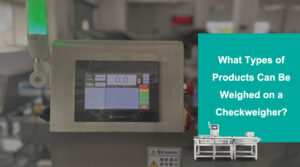Introduction
Identifying foreign contaminants in food products, especially those wrapped in aluminum foil, is crucial for maintaining food safety standards.
To increase consumer confidence, it is essential to identify any foreign substances that may be present in food. A few strategies exist to do this, such as using metal detectors to detect general packaging products. Furthermore, an X-ray inspection machine can identify metal packaging materials such as aluminum foil or stainless steel.
Importance of Detecting Foreign Contamination
Contamination from foreign substances can occur during the food production, processing, and packaging stages. These substances can come from raw materials, processing equipment, or human handling. Detecting these foreign substances is vital for preventing health risks, maintaining product quality, and complying with regulatory requirements.
Food manufacturers use various detection methods to ensure product safety—for example, visual inspection, chemical testing, metal detectors, and X-ray systems.

Detecting Foreign Contamination in Food by Visual Inspection
When detecting foreign contamination in food, performing a visual inspection is crucial. Inspect food before wrapping it in foil for debris or discoloration. This way, you can be confident that the food is safe to consume.
This initial screening process helps to identify any noticeable signs of contamination. While visual inspection is helpful, it may not detect smaller or transparent foreign substances.
You can utilize X-ray machines, metal detectors, and ultrasonic testing for comprehensive detection.

Detecting Foreign Contaminants in Food by Chemical Testing
Detecting Foreign Objects in Food by Metal Detector
The food industry often uses a metal detector to detect metallic foreign objects in food products. This ensures the safety of the food items.
It’s important to note that metal detectors can only detect foreign metal objects in general packaging products. These metal detectors are essential in maintaining the safety and quality of food by preventing the consumption of metal-contaminated products. They can identify fragments from processing equipment that may have entered the packaging.
However, metal detector cannot detect metallic foreign objects in aluminum foil-wrapped products due to the foil being a metal.

Detecting foreign Objects in food by X-ray Inspection System
The X-ray inspection system uses advanced X-ray technology to detect foreign substances in food without causing any damage. This technique is very proficient at detecting dense or metallic impurities. Additionally, the x-ray inspection can even detect hidden metal impurities in foil-wrapped food.
X-ray machines generate detailed images of food, which allows for precise detection and analysis of foreign objects. The food industry widely uses this method for detecting foreign contamination due to its high level of accuracy.

Conclusion
Identifying foreign substances in food packaged with aluminum foil is crucial to maintaining food safety and preserving quality.
Various methods are available for detecting foreign substances, including visual inspection, chemical testing, metal detectors, and X-ray inspection machines. These techniques have been proven effective in identifying such substances.
However, each method has its advantages and limitations. Combining these methods may be necessary to achieve a more comprehensive detection. Food manufacturers must implement reliable detection methods to uphold high standards and protect consumers’ health.
FAQs
Q1: What are the common foreign contaminants found in aluminum foil-wrapped food?
A1: Physical objects like glass, plastic, or metal fragments are common foreign contaminants in aluminum foil-wrapped food. These objects can mistakenly enter the food during processing.
Use a metal detector or X-ray system to detect contaminants and improve production line efficiency.
Q2: Is visual inspection sufficient to detect all types of foreign contaminants?
A2: Visual inspection is a valuable method for detecting visible contaminants. However, it may not be effective for identifying smaller or transparent substances.
Complementary techniques like food x-ray machines, metal detectors, and ultrasonic testing are necessary for comprehensive detection.
Q3: Are metal detectors capable of detecting aluminum foil?
A3: Metal detectors can’t identify products wrapped in aluminum foil because it’s also metal.
However, metal detectors can identify foreign metallic objects in food products, including aluminum foil. Therefore, using food metal detectors is crucial to ensure food safety.
Q4: How does an X-ray inspection system work in detecting foreign contamination?
A4: The process of X-ray inspection for food makes use of advanced technology to capture detailed images of food products.
This technique can detect dense or metallic impurities, including those hidden by aluminum foil. X-ray inspection systems have a high success rate in detecting foreign objects.





